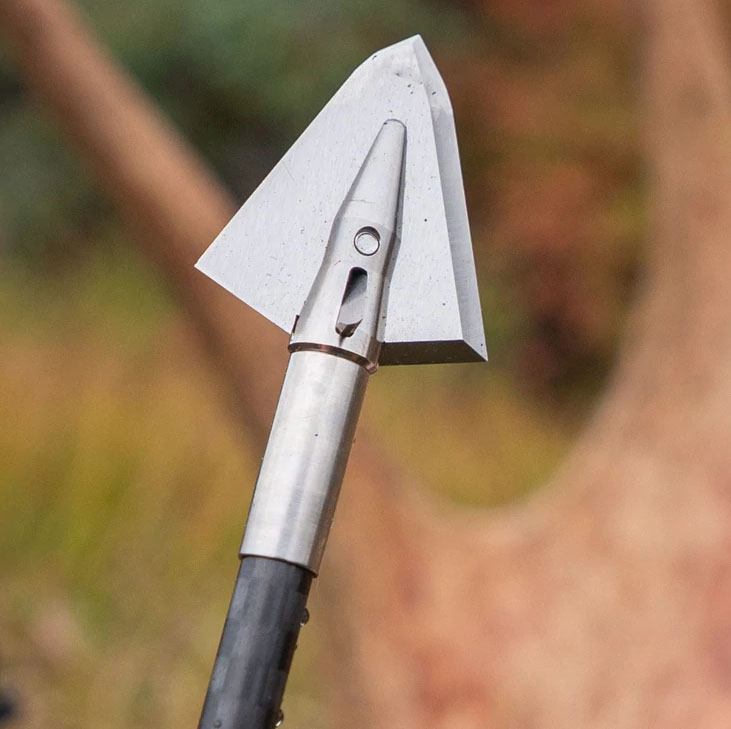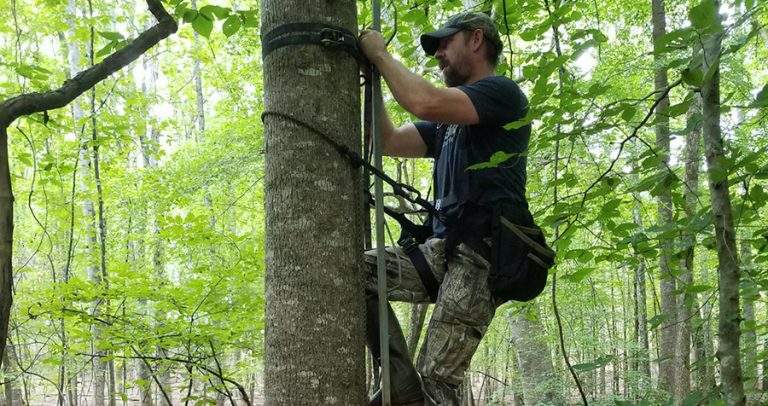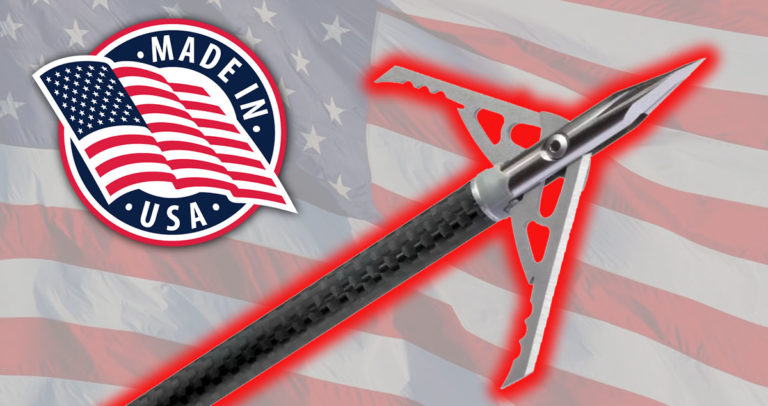What are Single Bevel Broadheads?
Last Updated on June 23, 2022 by Brian Grossman
If you’ve heard the recent buzz around single bevel broadheads and wonder what they’re all about, this article should clear things up and help you decide if these lesser-known broadheads are right for you.

There’s a lot of buzz these days in the bowhunting community about heavy arrows. And heavy arrow setups often go hand-in-hand with big, cut-on-contact, single bevel broadheads. So, what exactly are they, and what benefits do they provide? We’re glad you asked!
Single bevel broadheads aren’t new to the bowhunting world. They were first brought to market over 30 years ago by Harry Elburg, who called his groundbreaking broadhead the Grizzly. Since then they have undoubtedly been responsible for bringing down countless big game animals along the way.
Unlike the more common double bevel broadheads that most of us grew up hunting with, single bevel broadheads are only sharpened on one side of each blade edge. The other side of the blade edge is flat. So when you look at a single bevel broadhead like the one pictured here, you can see the beveled (or sharpened) edge on the right blade, but not on the left. The bevel on the left side of the blade would only be visible from the other side of the broadhead. This is considered a right-beveled broadhead. Manufacturers also make left-beveled broadheads. Which you would use depends on whether your arrows have right or left helical fletchings.
Benefits of Single Bevel Broadheads
By design, arrows with helical or offset fletchings rotate as they travel toward their intended target. This rotation helps stabilize the arrow and keeps it traveling in a straight line. With traditional double bevel broadheads, once the arrow hits a foam target or the hide and flesh of a deer, that rotation stops as the arrow penetrates until it looses all its energy. Single bevel broadheads are designed in a way to allow the broadhead and arrow to continue rotation even after contacting hide, flesh and even bone. This creates larger wound channels, and allows the broadhead to more effectively penetrate and shatter any bone it may come in contact with.
Check out the video below from Iron Will Broadheads showing how the an arrow with a single bevel broadhead continues rotating even after contacting hide, muscle and bone!
Why the Sudden Popularity?
So why are broadheads that have been on the market for decades suddenly the buzz of the hunting industry? It probably stems from a series of events starting with Dr. Ed Ashby’s groundbreaking research on the effectiveness of heavy arrows and single bevel broadheads on African big game animals. That research was brought to light more recently by Troy Fowler, aka the Ranch Fairy, who runs a popular YouTube channel highlighting Dr. Ashby’s research with very outgoing and colorful commentary. And The Hunting Public crew helped make the Ranch Fairy a household name among bowhunters by featuring him on their channel (see video below) and switching to heavier arrow setups themselves. This somewhat odd sequence of events has helped drive the popularity of heavy arrow setups and cut-on-contact broadheads, particularly single bevel broadheads.
Popular Single Bevel Broadhead Manufacturers
Despite their relatively new rise in popularity, there are a surprising number of single bevel broadheads on the market. This is by no means a comprehensive list, but we wanted to make you aware of some of the most well known manufacturers in case you want to give them a try this deer season. Coupled with the right arrow setup, we don’t think you could go wrong with any of these.
Conclusion
Single bevel broadheads have been used commercially over 30 years now, taking down some of the largest wild game in the world. There is no doubt they are effective when combined with a proper arrow setup. If you’ve been wanting to give a heavy arrow setup a try, or if you’re already shooting heavy arrows but want to try something different up front, consider one of the single bevel broadheads listed above.


![9 Best Fixed Blade Broadheads for Deer Hunting [2022]](https://www.huntthesouth.com/wp-content/uploads/2022/07/Best-Fixed-Blade-Broadhead-featured-768x768.jpg)




![10 Best Broadheads for Traditional Archery [2022]](https://www.huntthesouth.com/wp-content/uploads/2022/06/magnus-stinger-768x768.jpeg)